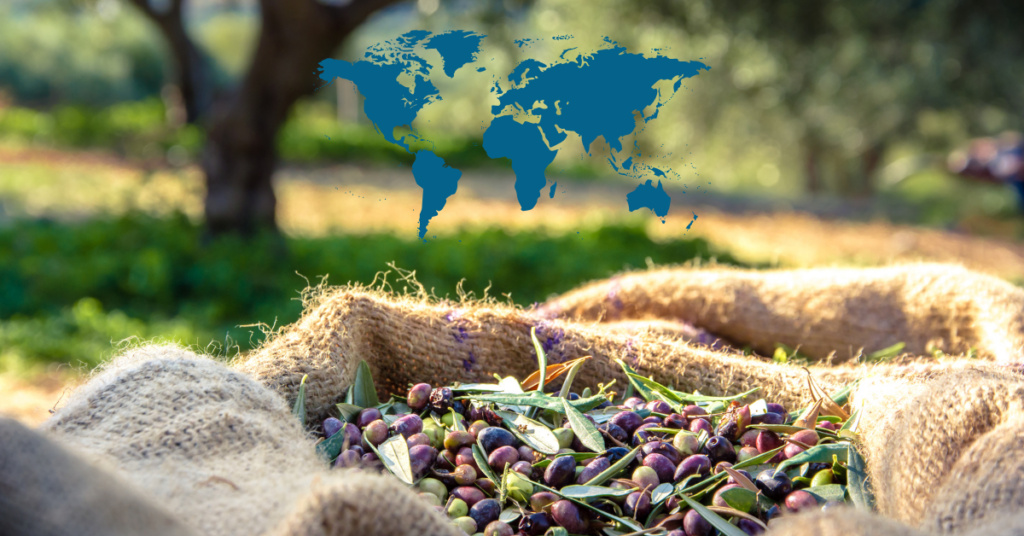
Exploring Olive Oil Production in Non-Traditional Regions

Exploring Olive Oil Production: When we think of olive oil, the rolling hills of Tuscany, the ancient groves of Greece, or the sun-soaked coasts of Spain often come to mind. These Mediterranean powerhouses have long dominated olive oil production, benefiting from their ideal climates and centuries-old traditions. However, olive oil production is no longer exclusive to the Mediterranean basin. As global demand for this “liquid gold” continues to grow, new players outside the traditional regions are stepping onto the stage, surprising the world with innovative techniques and exceptional quality.
The Expanding Global Footprint of Olive Oil Production
In recent decades, countries far from the Mediterranean have ventured into olive cultivation, leveraging modern agricultural practices and adapting to local climates. These emerging regions often challenge conventional wisdom about where olives can thrive and produce oils that rival the best in the world. Here are some key non-Mediterranean regions making waves in olive oil production:
1. California, USA
The Golden State leads the way in olive oil production in the United States, boasting a climate similar to that of the Mediterranean. California’s olive groves span the Central Valley and coastal regions, where long, sunny days and mild winters provide ideal growing conditions. Producers in California emphasize quality over quantity, often focusing on extra virgin olive oil (EVOO). The state’s innovative spirit has also driven advancements in sustainable farming and high-density planting methods, boosting efficiency and yields.
California olive oils frequently win international awards, earning praise for their vibrant flavors and meticulous production processes. Varietals like Arbequina, Arbosana, and Koroneiki thrive in the region, yielding oils with notes of green grass, almonds, and ripe fruit.
2. Australia
Australia has emerged as a significant player in the olive oil market over the last few decades. With regions like Victoria, South Australia, and Western Australia leading production, the country’s Mediterranean-like climate is well-suited to olive cultivation. Australian producers are known for their commitment to quality, often employing modern techniques such as mechanical harvesting and cutting-edge milling practices.
The Australian Olive Association’s strict quality standards ensure that local oils meet rigorous criteria. Australian olive oils are often characterized by their robust, peppery profiles and high levels of polyphenols, making them a favorite among health-conscious consumers.
3. South America
South American countries, particularly Chile and Argentina, have embraced olive oil production with great enthusiasm. In Chile, olive groves flourish in the central valleys, where the climate mirrors that of the Mediterranean. The industry has grown rapidly, with many producers focusing on premium extra virgin olive oils for export.
Argentina, better known for its wine, has also found success with olives, particularly in the Mendoza region. The country’s oils are often described as smooth and buttery, appealing to a wide range of palates. South America’s commitment to sustainable practices and technological innovation has further elevated its reputation in the global market.
4. South Africa
South Africa’s olive oil industry may be small, but it is steadily gaining recognition. The Western Cape’s Mediterranean climate supports olive cultivation, and local producers have invested heavily in quality-focused production. South African olive oils often feature bold, grassy flavors with a hint of bitterness, reflecting the unique terroir of the region.
5. Asia
Countries like India, China, and Japan are also experimenting with olive oil production, albeit on a smaller scale. In India, olive groves in Rajasthan represent a nascent industry that aims to reduce reliance on imports. Japan’s olive production, centered on Shodoshima Island, produces small quantities of artisanal oils known for their delicate flavor and pristine quality.
Challenges and Opportunities
Exploring Olive Oil Production outside the Mediterranean is not without its challenges. Growers must contend with unfamiliar climates, pests, and diseases that may not affect traditional regions. Additionally, newer producers often face the daunting task of competing with well-established Mediterranean brands.
However, these challenges are met with opportunities. Emerging regions have the advantage of adopting the latest technologies and practices from the outset, avoiding some of the inefficiencies entrenched in older industries. Moreover, consumers’ growing interest in diverse and unique flavor profiles has created a market for oils from non-traditional regions.
The Future of Global Olive Oil Production
The expansion of olive oil production beyond the Mediterranean underscores the adaptability of this ancient crop. As climate change reshapes agricultural landscapes, new regions may continue to emerge as significant players. Meanwhile, the pursuit of quality, sustainability, and innovation ensures that olive oil’s global appeal will only grow.
Whether you’re a seasoned connoisseur or a curious foodie, exploring olive oils from these non-traditional regions is a journey worth taking. Each bottle tells a story of resilience, creativity, and the enduring allure of the olive tree.